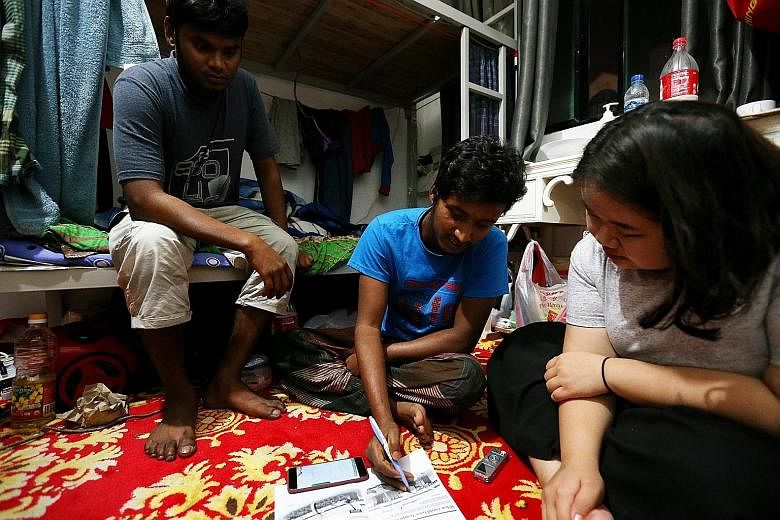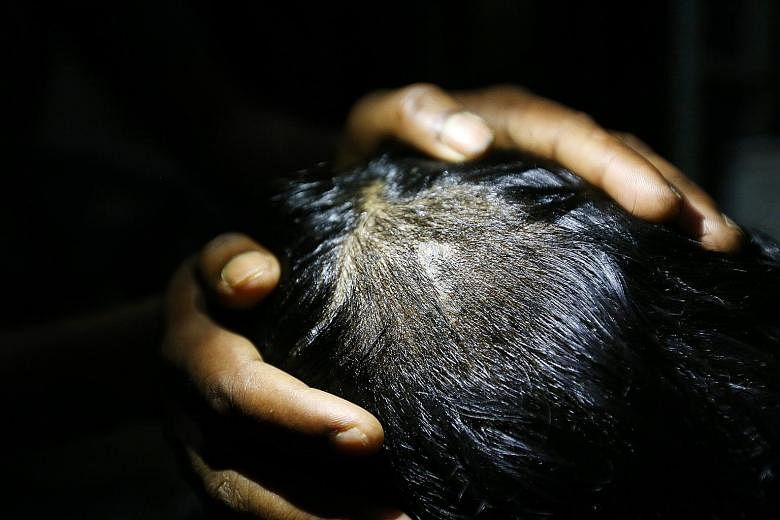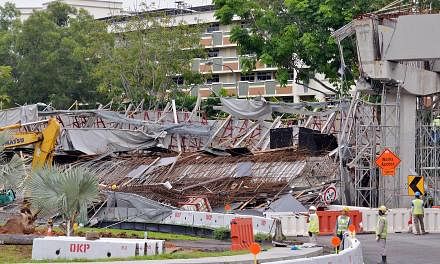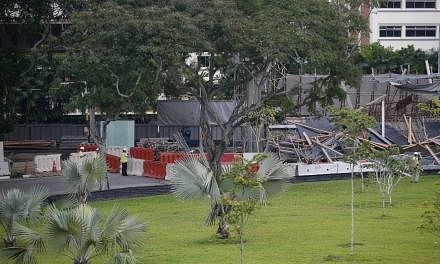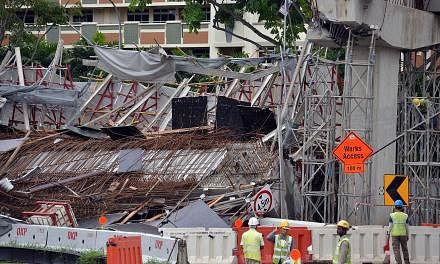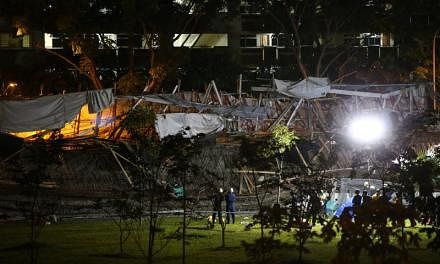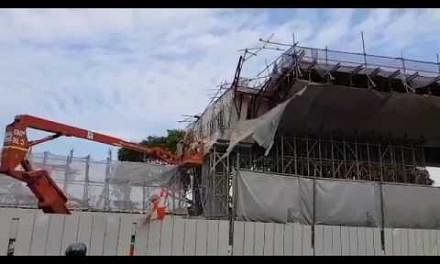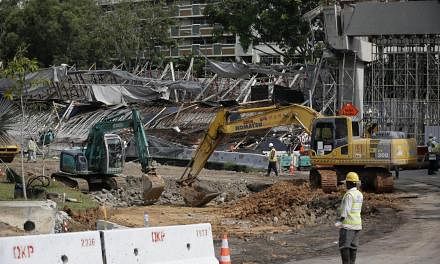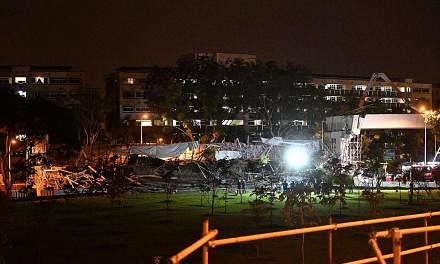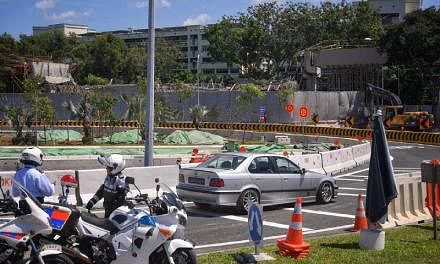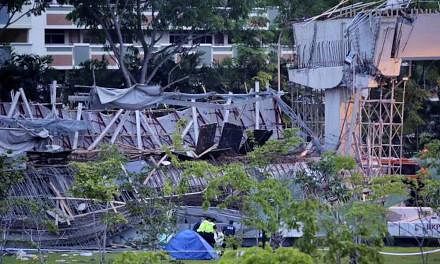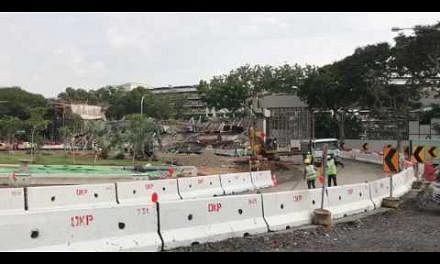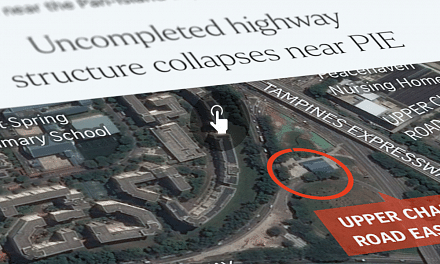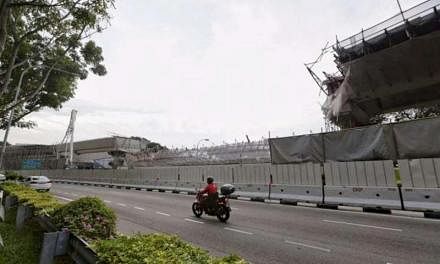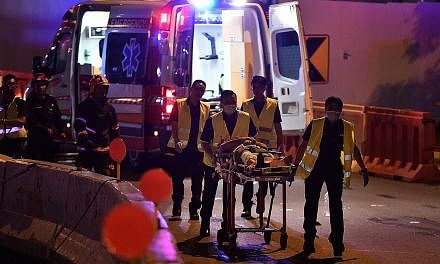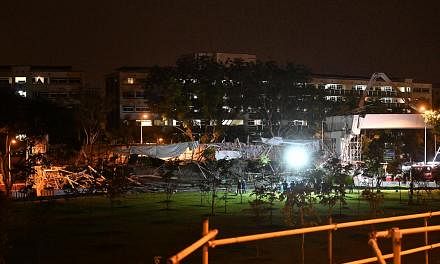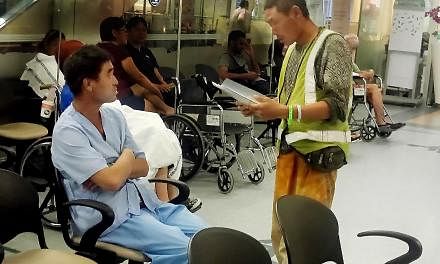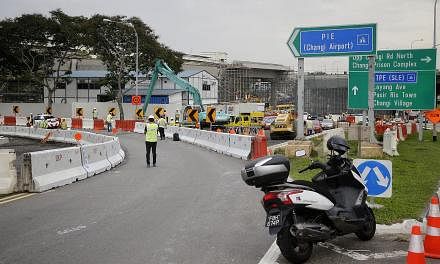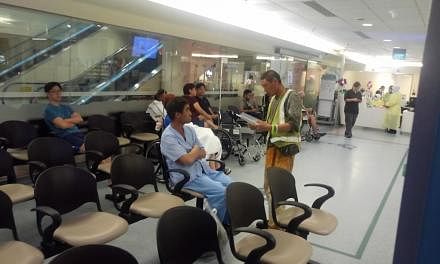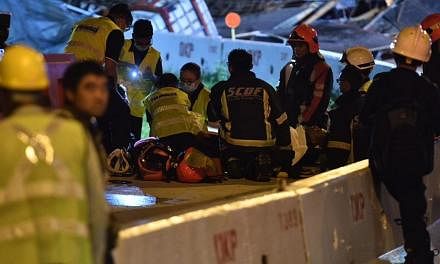Bangladeshi worker Raihan Mohammad and his fellow workers had gone about their usual tasks, casting cement on the top deck of a road viaduct, that when completed, would link the Tampines Expressway to the Pan-Island Expressway.
They were more than halfway done with cement works on the central deck when the structure came tumbling down, said Mr Raihan, 24, referring to the collapse in Changi about two weeks ago that killed one worker and injured 10 others, including himself. "It all happened in five seconds, and we fell. No sound, no warning, and it fell," said Mr Raihan, in English.
Speaking to The Sunday Times in the first full account since the structural collapse at the Upper Changi Road East worksite, he and two of his colleagues revealed that they had noticed a small gap on each side of the central deck at least 30 minutes before the incident.
"(The gap) is not supposed to be there, it's not normal," said Mr Raihan, adding that they had not seen such a gap while working on the other segments of the viaduct.
He said it was between 2cm and 5cm in width, adding that he had told investigators from the Ministry of Manpower (MOM), police and main contractor Or Kim Peow (OKP) Contractors about it after the incident.
The unusual gap was also confirmed by two other workers ST spoke to. When the workers highlighted the gap to the site supervisor that morning, they were told to continue working and that it was not a problem, said Bangladeshi worker Hossain Mohd Mithu, 22.
The men had started the shift at 1.30am and, by about 2.30am, they were working on the central deck.
By 3.30am on July 14, the viaduct had collapsed, killing Chinese national Chen Yinchuan, 31.
The 10 injured were taken to Changi General Hospital. Six have been discharged while four remain warded, including site supervisor Gao Liqin, 49, from China, who was impaled through his hip by a reinforcing bar or rebar. Of the survivors, six are from Bangladesh, three from China, and one from India.
When contacted, the Building and Construction Authority, Land Transport Authority and MOM declined comment on the workers' claims of the gap as investigations are still ongoing. OKP also declined comment on the alleged gaps, saying it was assisting the authorities with investigations.
ST also contacted Tongda Construction and Engineering, which employed 10 out of 11 affected workers - including Mr Chen - about the gaps, but a man answering the phone said he did not have knowledge of the matter and declined to identify himself.
ST understands the families of Mr Chen and Mr Gao arrived in Singapore last week and that Tongda, as well as OKP, have been providing assistance and support.
While it is unclear if the gaps played a part in the incident, preliminary investigations showed corbels - structures put in place to support the weight of precast beams between two sections - at one segment of the viaduct had given way.
More than two weeks after the incident, the sense of panic and chaos is still fresh in the workers' minds.
Mr Raihan said he bounced off two surfaces before he hit the ground after the collapse. He later received six stitches for a cut on the back of his head. He said: "I remember lying there scared and hoping that everyone would be rescued."
Mr Moniruzzaman Mohammad, 33, found himself hanging upside down after his left leg got caught between the matrix of rebars. "I was conscious, but I couldn't feel anything in my leg. There was cement in my eyes, nose, mouth and hair, but I managed to release myself and crawl towards some trees."
The three Bangladeshi men are on paid medical leave ranging from 14 to 90 days each while the two Chinese workers - Mr Wang Jun Wei, 40, and Mr Chen Jiang Hui, 41 - are back at work. Mr Moniruzzaman, discharged from hospital on Thursday with his left leg in a cast, has not told his family about the incident as he doesn't want them to worry. "I've only been here for a year, I want to continue working, but I'm worried I won't be able to return to work... I'm not angry with anyone. I'm just anxious I won't be able to stay here."
Mr Raihan said life is different after the incident. "I get nightmares and I jump at the slightest sound, like a door slamming. The doctors gave me a lot of painkillers, but my heart isn't at peace," he added.
•Additional reporting by Nilanjana Sengupta
